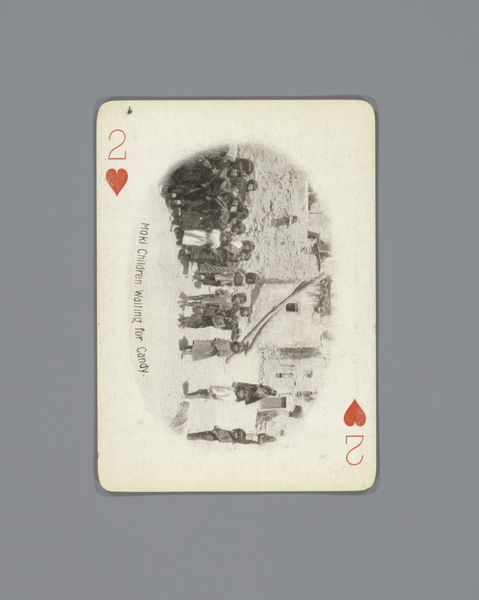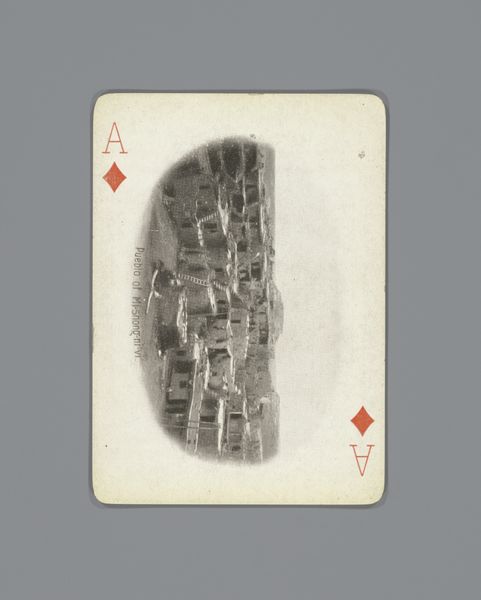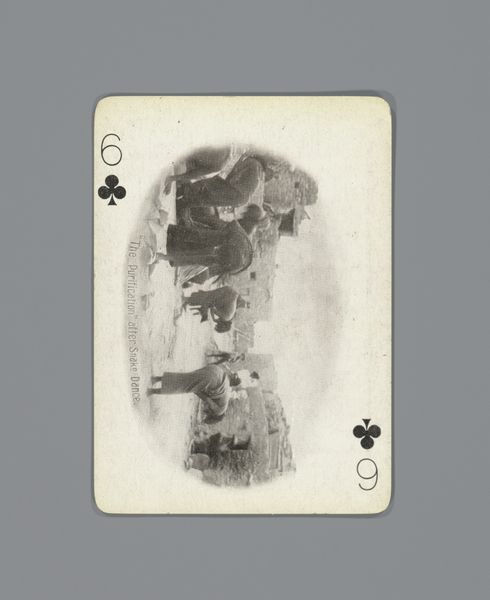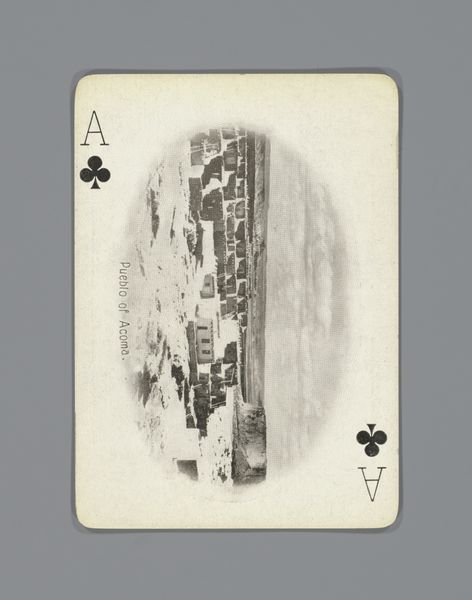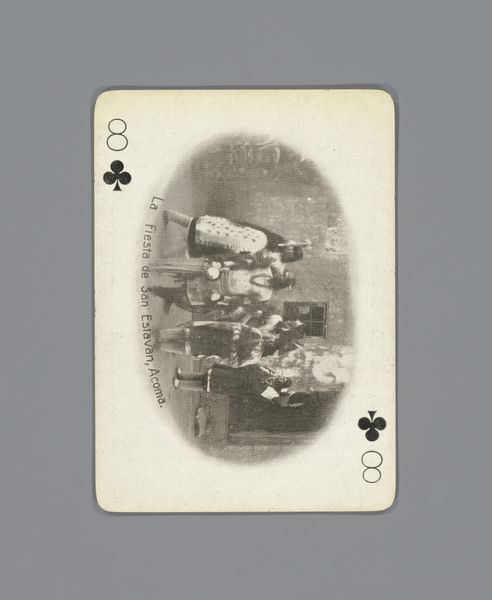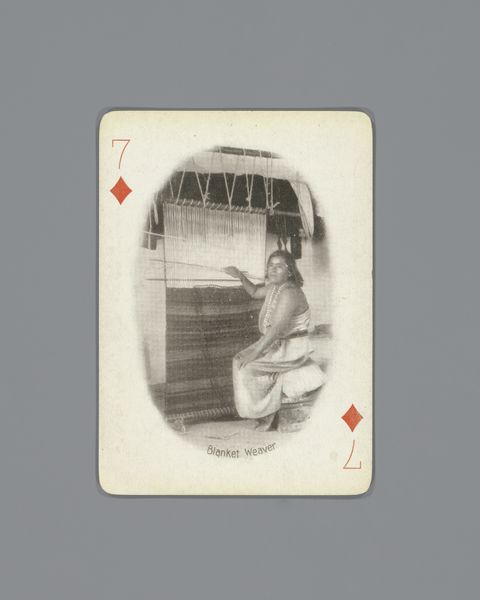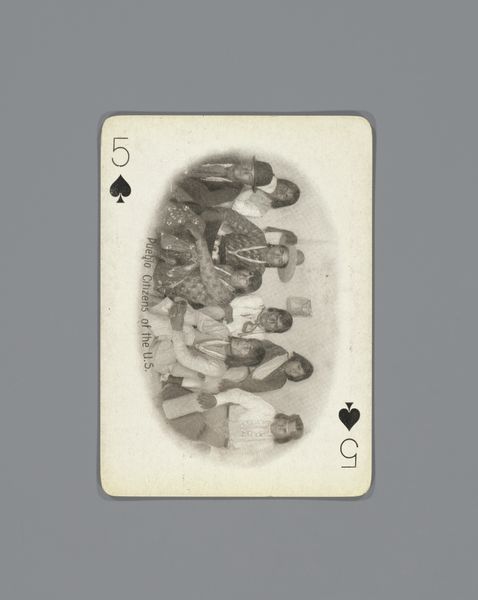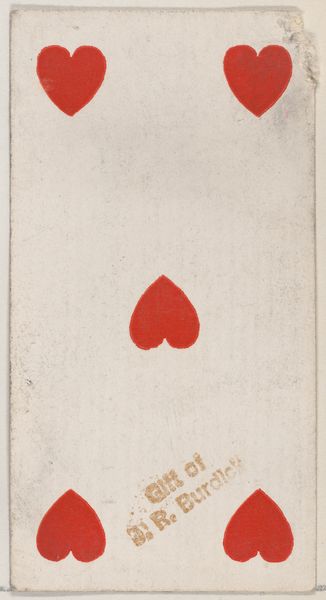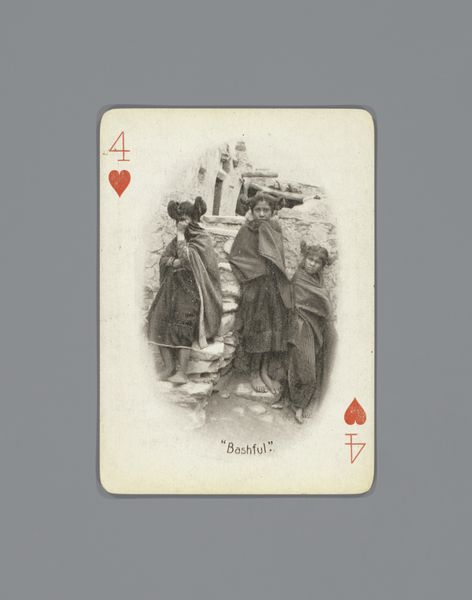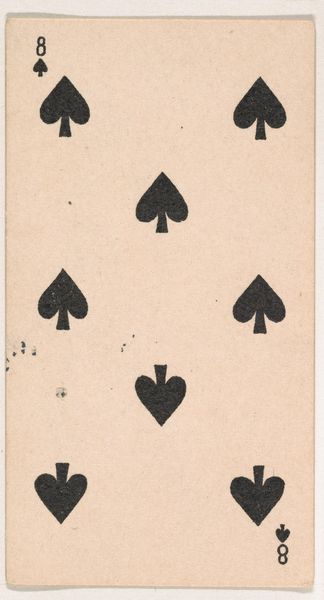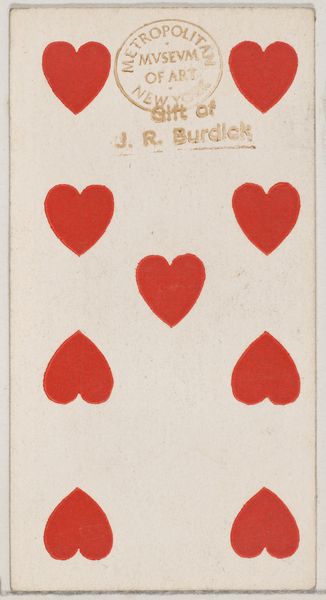
albumen-print, photography, albumen-print, architecture
#
albumen-print
#
photography
#
albumen-print
#
architecture
Dimensions: height 88 mm, width 63 mm
Copyright: Rijks Museum: Open Domain
Curator: This albumen print, dating back to around 1900, is entitled "Pueblo of Walpi." It's by Adam Clark Vroman, a photographer whose work is closely tied to the Indigenous Americas movement. And isn't it presented in an intriguing way? Editor: Absolutely! At first glance, I’m struck by the dreamlike quality. The sepia tones lend a nostalgic feel, and the texture suggests resilience… and perhaps a hint of detachment. It's almost like a memory surfacing. Curator: You picked up on something there, because this particular print is affixed to a playing card, the Ace of Hearts, if you can believe it. Vroman would often sell his photographs as souvenirs, and what an unusual presentation. This contrasts with the usual framing of landscapes, doesn't it? Editor: It absolutely does! Seeing this iconic architecture embedded into this playful form generates a really jarring tension. What was its purpose and the viewer's likely interaction? Did it amplify a sense of ownership and dispossession or foster something new? We are forced to consider how this reflects on the colonial gaze—and also, dare I say, romanticizes that very act of looking. Curator: Well, it’s an interesting push and pull because, on one hand, he’s capturing the grandeur of this ancient Pueblo—a breathtaking and beautiful feat of human creation— but, at the same time, distilling that profound cultural achievement onto something as flippant as a playing card, for purely commercial purposes. Editor: Precisely. It also speaks to the power of photography itself, doesn't it? To document and commodify simultaneously, sometimes perpetuating a selective, romanticized narrative of places and cultures, but then sometimes fostering much needed preservation of those spaces, both physically and conceptually. Curator: I feel, in a way, this playful presentation removes a certain wall of formality and preciousness around viewing and engaging with art. Here it is: raw, unexpected and almost jarring in presentation and message. It speaks to this constant renegotiation we all do around themes of visibility, preservation and also access and respect, within the art space. Editor: Beautifully put. "Pueblo of Walpi" is more than a visual document of the past; it acts as a catalyst, beckoning us to see, feel, question, and then see again.
Comments
No comments
Be the first to comment and join the conversation on the ultimate creative platform.
